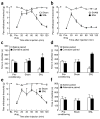Unmasking the tonic-aversive state in neuropathic pain
- PMID: 19783992
- PMCID: PMC3427725
- DOI: 10.1038/nn.2407
Unmasking the tonic-aversive state in neuropathic pain
Erratum in
- Nat Neurosci. 2010 Aug;13(8):1033
Abstract
Tonic pain has been difficult to demonstrate in animals. Because relief of pain is rewarding, analgesic agents that are not rewarding in the absence of pain should become rewarding only when there is ongoing pain. We used conditioned place preference to concomitantly determine the presence of tonic pain in rats and the efficacy of agents that relieve it. This provides a new approach for investigating tonic pain in animals and for evaluating the analgesic effects of drugs.
Figures



References
MeSH terms
Substances
Grants and funding
LinkOut - more resources
Full Text Sources
Other Literature Sources

